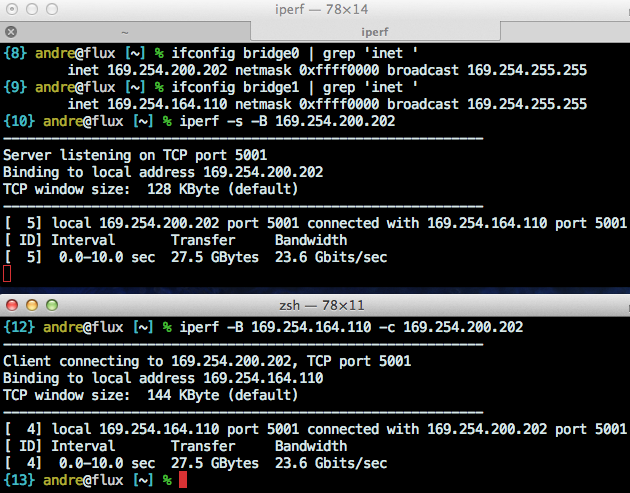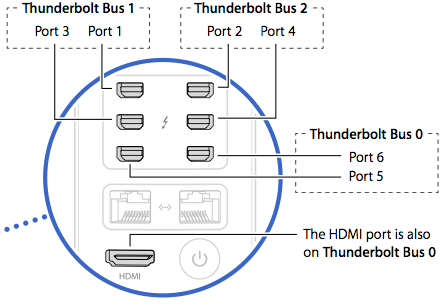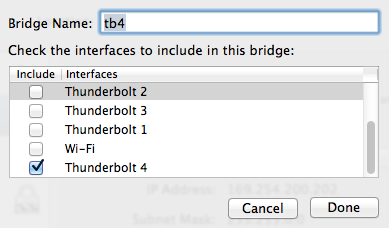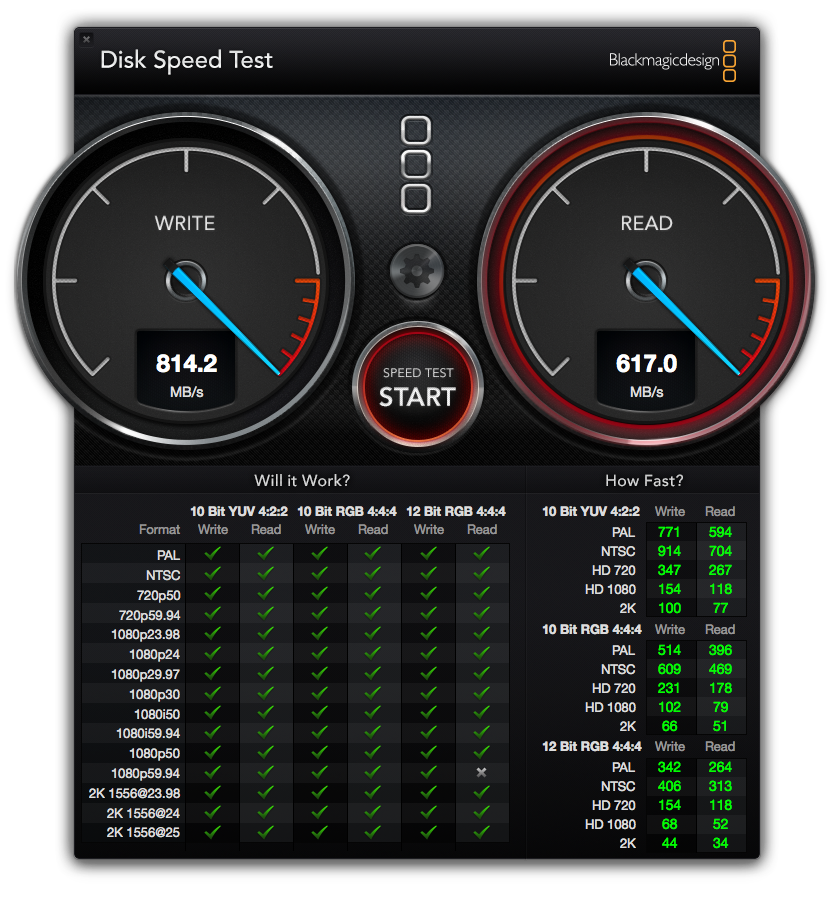2011 was drawing to a close, and I was uneasy at the lack of a Mac Pro refresh. My 2009 MacPro4,1 was still performing admirably, but video workflows were starting to feel sluggish as I incorporated more high-frame-rate content. Tasks like video encoding were almost as fast on laptops shipped earlier in 2011 as they were on my Big Bad MacPro.
time avexporter -dest ~/t -replace -preset AVAssetExportPreset1920x1080 -source ~/Movies/wow.mov
# MacBookPro8,2 Intel Core i7 2820QM @ 2.3 Ghz / 32nm “Sandy Bridge” / Early 2011 (thor)
326.51s user 11.64s system 447% cpu 1:15.55 total
325.68s user 11.63s system 448% cpu 1:15.29 total
# MacPro4,1 Intel Quad Core Xeon W5590 @ 3.3 Ghz / 45nm “Nehalem” / Early 2009 (rune)
324.57s user 10.70s system 451% cpu 1:14.24 total
323.17s user 10.56s system 451% cpu 1:13.97 total
Even in 2011, I figured the Mac Pro tower form factor was not long for this world. Thunderbolt had already arrived, and has turned out to be a pretty nice interconnect for storage, networking, and other high-bandwidth peripherals. Notably, video cards are not among the things that are typically worthwhile to use over thunderbolt (you’d need an external thunderbolt –> PCI chassis, and you’d have to live with sub-par graphics performance). Also keenly detecting a trend away from discrete GPU and towards ‘integrated’ GPUs in newer Macs, I wrote the following letter to a high-level apple executive:
We’ve never met, but I feel compelled to send this note. I know Apple does not comment on rumors, and I fully expect no reply.
*please* don’t further marginalize users who want the best possible GPU performance on ANY platform. Our current Mac Pro GPU options are already pretty bad compared to the rest of the desktop market, and all of our mobile devices still lag far behind high-end desktop GPU performance – even though our best desktop card (the ATI 5870) shipped over 3 years ago (!!), and our best mobile GPUs are much more recent.
While I realize it would probably be very easy to make the business case for not caring about the Mac Pro, please consider the possibility of maintaining it as sort of a loss-leader. The biggest, best Mac Pro attracts power users and power developers alike.
I’m no EE, but I do understand the basics of power / size / heat / performance ratios. Given similar technology, the larger card that uses more power will almost certainly be faster. That’s the one I want, and I’m not alone.
Now… if we can meet or exceed *high-end* desktop performance in a portable package, I’m all for it! Today’s portables aren’t that close, but … who knows what the future holds.
When a refreshed MacPro5,1 tower landed the following year in 2012, I was surprised – at least, until I looked at the specs, which were identical to the 2010 MacPro5,1 tower except for RAM and CPU. In other words, it seemed as though relatively little effort was put into this refresh, and it didn’t go very far in reassuring me that the Mac Pro had a future. “Not dead yet”, I thought.
I kept banging away, hope for the Mac Pro slowly fading over time, until October 2013 when the MacPro6,1 was announced. There were unanswered questions, but what we saw was pretty impressive, and would clearly keep the flame alive. I was extremely pleased to see such a head-on approach to the GPU problem, and it made me feel like my letter two years prior came at an interesting time for the people who built this thing. When I heard of the intended availability (Dec ’13), I probably put on a little sad face, because who would ever intentionally ship a product in December, unless there were larger constraints at play? I expected this date to slip, or for availability to be constrained at first. Which is all fine, because after waiting this long, a few more months seemed like nothing – and the worry was completely evaporated :)
They did manage to ship some new Mac Pros in 2013, but indeed availability was constrained for many months. It wasn’t until the second or third day of WWDC 2014 that the new mac pro was finally made available for purchase by employees at a discount (think: customers first). I placed my order within hours, and it shipped the following day!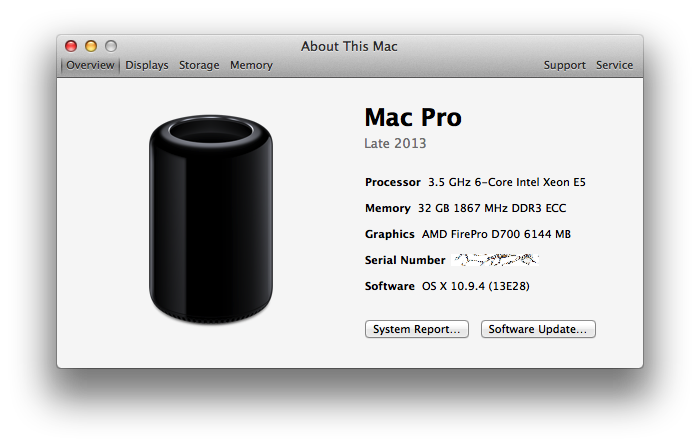
It’s pretty much a dreamboat, even though single-core workloads are faster on a friggin iMac. The same avexporter test shown earlier clocks in at 1:03 on this mac, after logging about an ‘error loading GPU renderer’. When all the hardware resources are brought to bear (e.g. a stack of 19 effects rendering in real-time without any dropped frames in FCP X), the result is one you totally can’t achieve on an iMac – although you can get close by slapping some fast GPUs into a MacPro5,1.
There’s a fair amount of new architecture in this thing. I feel like MacPro6,1 is waaaay different from anything else Apple ships, and is decidedly ‘off the beaten path’. I have found a couple software oddities here and there that seem unique to this model, but nothing serious. In general, performance and reliability have been very good, and there’s nothing about the hardware that makes me uneasy. It even has a power light! Wow!
Shortly after I got foci, I also picked up a thunderbolt cable, even though the laptop was my first and only thunderbolt device. That cable hung in my closet until a couple hours ago, when I used it to benchmark a thunderbolt <–> thunderbolt network on the new pro.
This leads me to conclude that the original thunderbolt cable is also a thunderbolt2 cable. Fancy!
Custodial note: doing the above thunderbolt test requires connecting the cable across two different thunderbolt controllers, so e.g. from port 1 to 2, or 3 to 4, but not 5 to 6. Use the following diagram:
You’ll then need to create two thunderbolt bridges in the Network prefpane, and map each of the ports you’re using to a different bridge. Click the gear menu at the bottom of the interface list, then select “Manage Virtual Interfaces” to reveal the bridge editor.
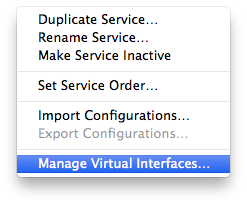
Let’s see, what else… ramdisk i/o seems to top out at about 4 GB/s.
The LuxMark OpenCL benchmark tells a good story. MacPro6,1 is shown first, followed by MacPro4,1.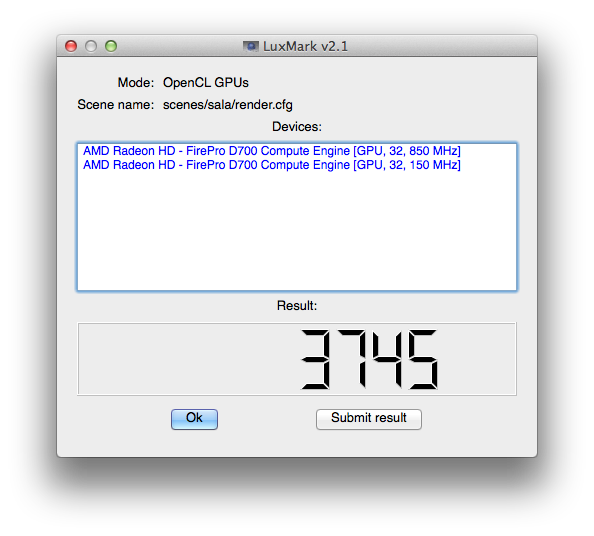
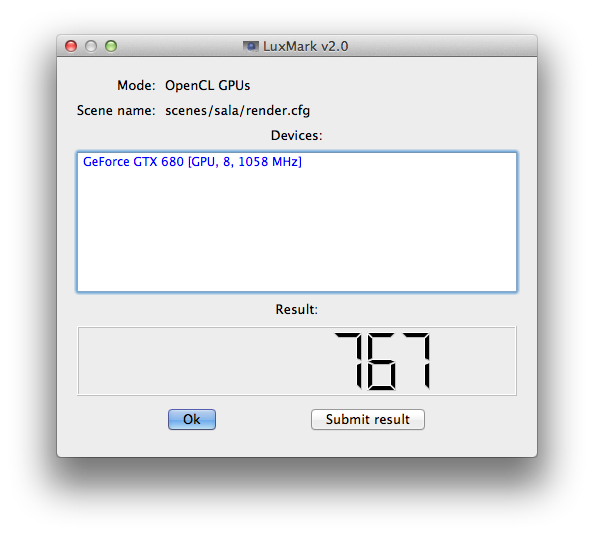
I also picked up a Promise Pegasus2 R6, which benches faster than the iStorage Pro setup it is replacing, even though it’s got 2 fewer spindles.
